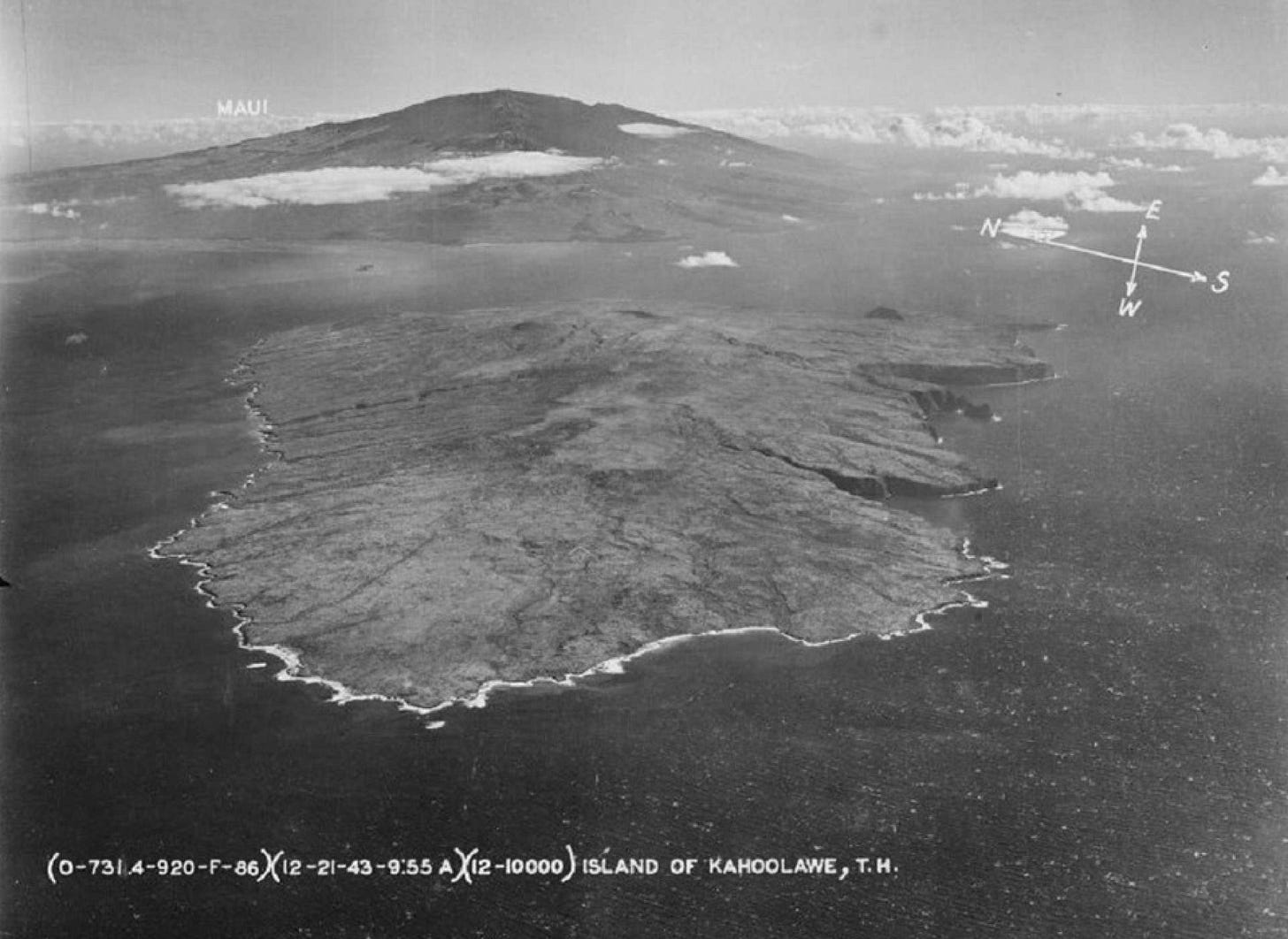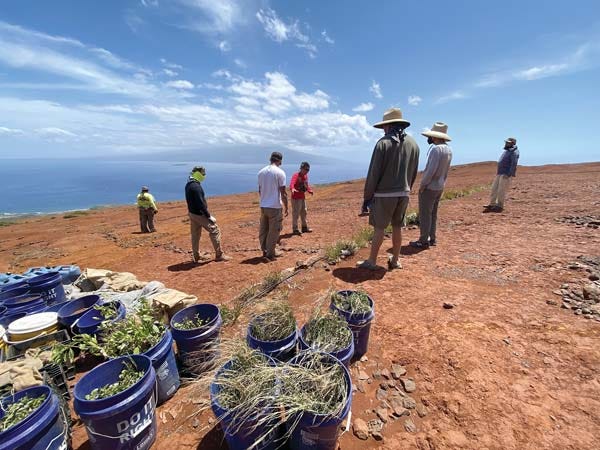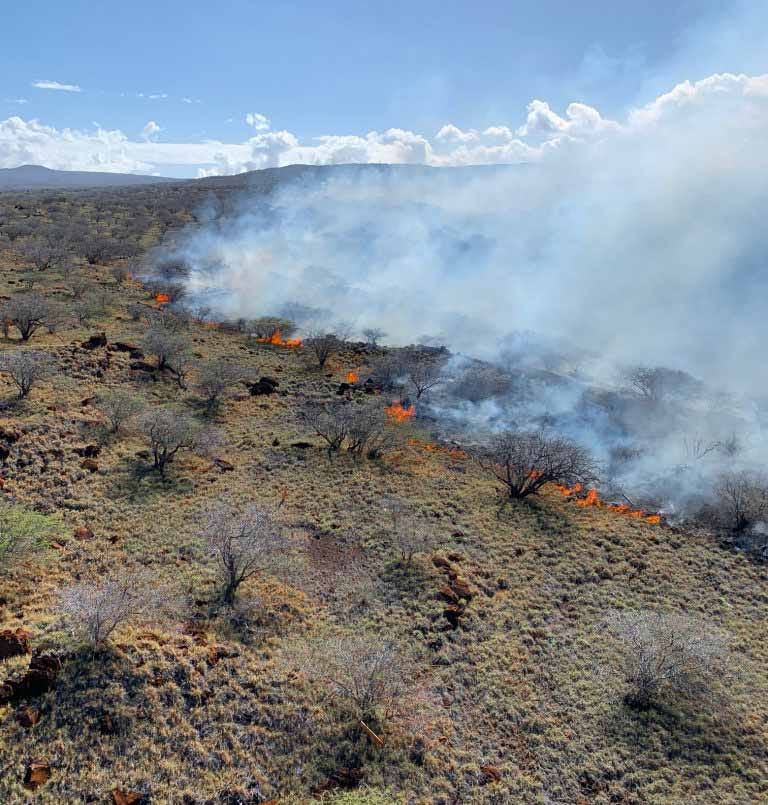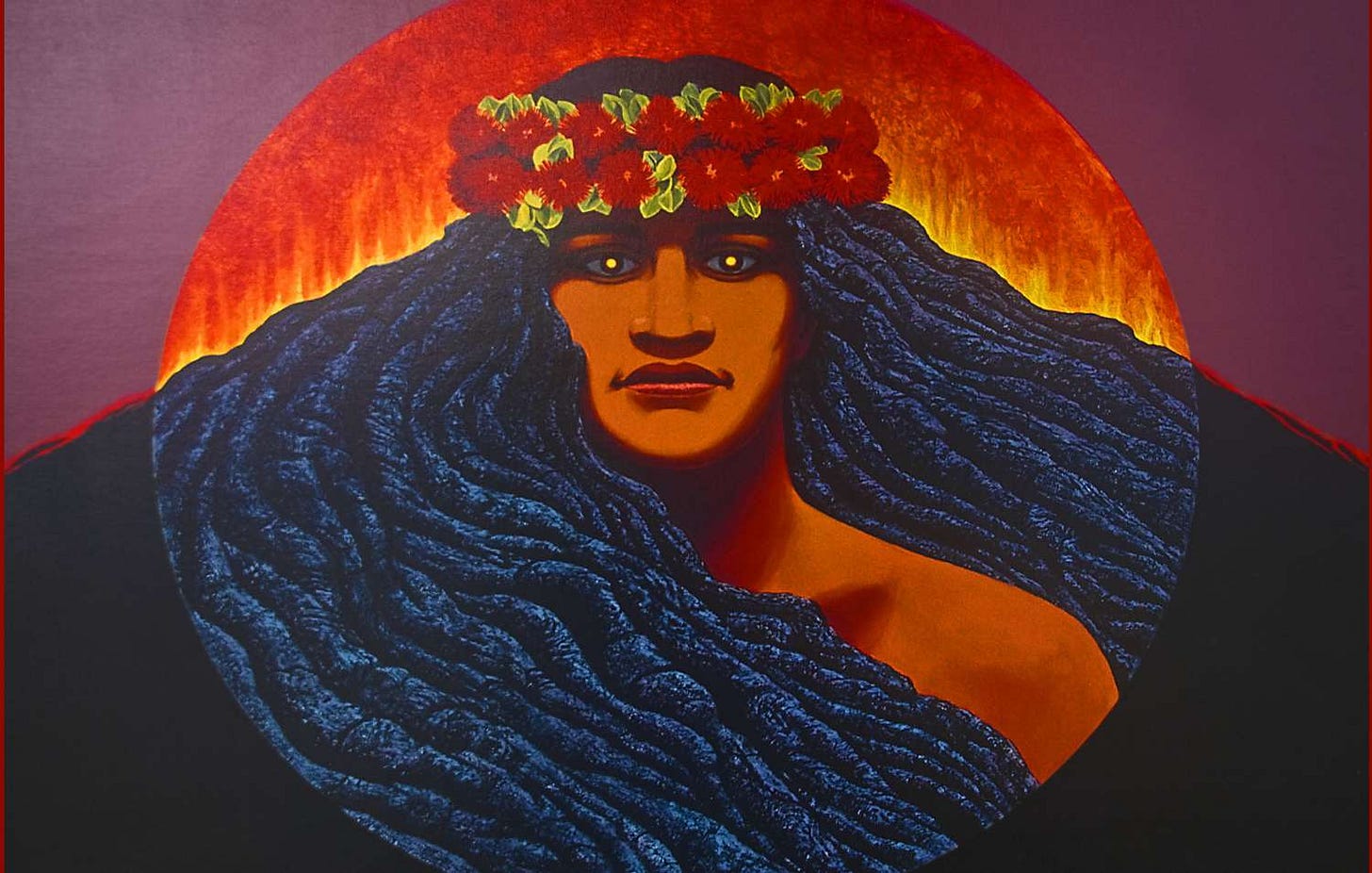Hawaii and Pele's Energy
The only feasible way of breaking the grip of the NRC on US nuclear power is the 10th Amendment. Each state needs to decide for itself, how it wants to regulate nuclear. The easiest place to do this is in states whose grid is entirely intra-state, avoiding the Commerce Clause. The obvious candidates are Alaska and Hawaii. Let's start with Hawaii.
Figure 1. Kaho’olawe looking northeast towards Maui and Haleakala, 1943
Kaho’olawe is a 45 square mile Hawaiian island whose northern tip is 5 miles south of Maui. The highest point is only 450 meters above sea level. The island is in the rain shadow of Haleakala. It averages 26 inches per year, but it's in the form of occasional heavy rains, usually associated with winter kona storms, separated by long periods of drought.
Prior to the arrival of the white man, Kaho’olawe supported a sparse population based mainly on fishing. It was the stepping off point for the voyages to Polynesia, and a center for navigational instruction. Cook's gift of goats to the islands resulted in completely denuding Kaho’olawe, and the depopulation of the island. In the 19th century, the Hawaiian kings used Kaho’olawe as a penal colony. Some sources claim conditions were so harsh that some prisoners starved to death. Attempts at ranching late in the 19th century and early in the 20th century were never truly successful. After Pearl Harbor, the military took over the entire island and used it as a training area and bombing target. This continued until 1990.
In 1976, Maui locals got fed up with the bombing and started a movement to end it. This eventually was successful, and in 1994, the military deeded the island to the State which declared it a reserve, and strictly limited any access. The military has cleared 75% of the island of unexploded ordnance; but the remainder has yet to be cleared.
Figure 2. Volunteers scratching Kaho’olawe's hard surface.
Despite attempts to revegetate the island, it's a barren land. Much of the island is hard pan. There's a passel of buildings on the southwest coast called Base Camp. But there are no harbors. In 2020, a wildfire burned 30% of the island. The fire was allowed to burn in part because of fear of unexploded ordnance; in part because there was nothing much to protect.
Figure 3. Extent of February, 2020 Brush Fire.
Figure 4. February, 2020 Brush Fire up Close.
Despite its impoverished past and ugly present, Kaho’olawe has become a symbol for the revival of Hawaiian culture. In 1993, the State Legislature made a Reserve of the entire island and the waters up to 2 miles offshore. This area can only be used for native Hawaii cultural and spiritual purposes, and subsistence fishing. All commercial uses are prohibited. The plan is the island will end up as a Native Hawaiian sovereign entity, similar to an Indian reservation. But right now nothing much is happening.
The southern tip of Kaho’olawe is 17 miles downwind from Maui, and there's nothing to leeward for thousands of miles. It could be a great nuclear protopark. If Hawaii really wanted to help native Hawaiians (and all Hawaiians), Kaho’olawe would become a source of cheap, dispatchable carbon free electricity for Hawaii. Currently, Hawaiians are paying 40 to 50 cents per kWh for oil fired power with a CO2 intensity of 840 grams per kWh. They could be paying less than 10 cents per kWh for dispatchable nuclear power with a CO2 intensity of 5 g/kWh. A portion of the power could go to desalination, which could be used to vegetate Kaho’olawe.
But to do that the Hawaiians would have to renounce the control of the US government over their source of electricity, and in particular the unbridled tyranny of the Nuclear Regulatory Commission. Under the 10th Amendment, they have every right to do so. They could form a coop in which the ratepayers/shareholders decide for themselves the regulations governing their power plant(s). The Gordian Knot Group respectfully suggests Underwriter Certification based on an S-shaped radiation harm model.
Figure 5. Pele, the Face of Nuclear Energy?
Pele is the Hawaiian goddess of terrestrial fire, manifested in her volcanoes. The source of her fire is nuclear energy. Pele is offering Hawaiians her fire in usable form. Will they accept the offer?







"Will they accept the offer?"
I can't imagine they would. Hawaii is even more beautiful than California, and has an even worse political climate.
I thought this piece was going to be about Project Pele: https://www.cto.mil/pele_eis/